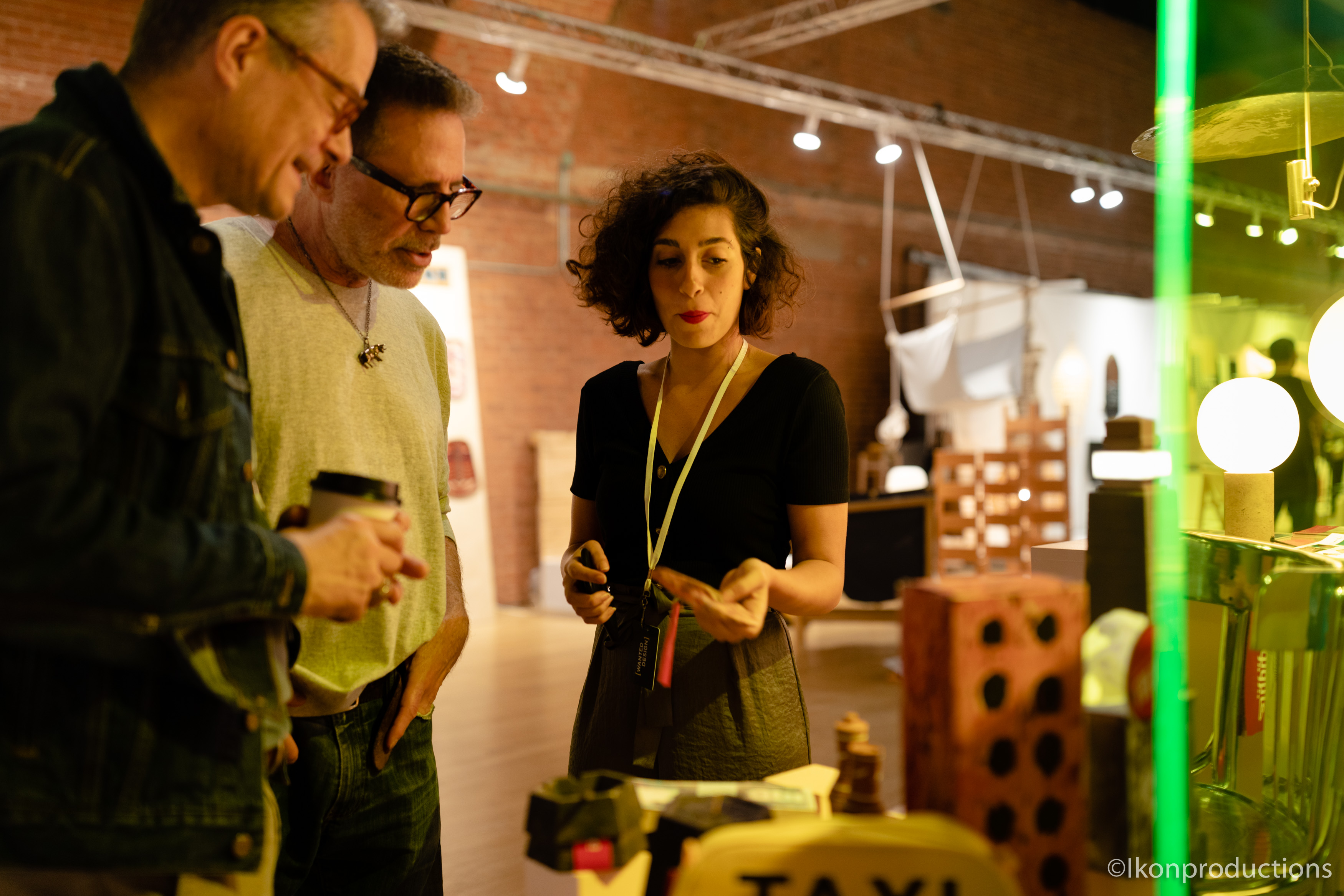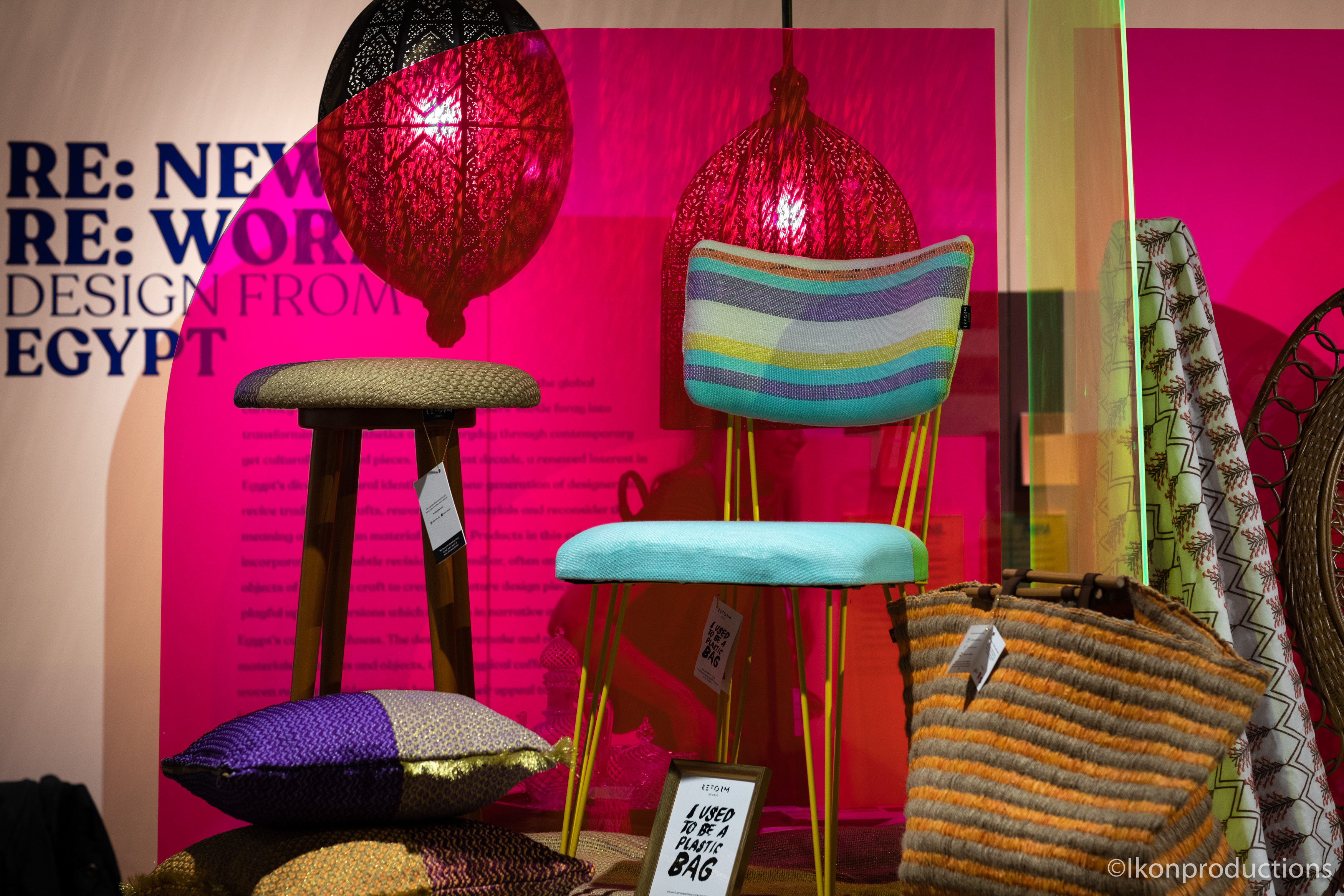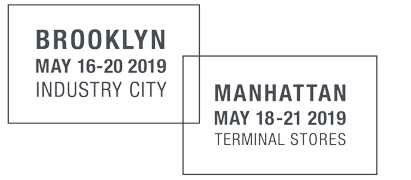Egyptian Design
Thirteen Egyptian design studios were for the first time represented in New York as part of WantedDesign Manhattan last May in a pavilion curated by architect Mohamed El Shahed. His concept “(re)New (re)Work” aimed to reflect on the journeys of the designers featured and the stories behind their designs.
Read our Q&A with the designers and curator to learn more about the Egyptian contemporary design scene.
– How did WantedDesign visitors responded to the Egyptian Pavilion at WantedDesign?
Happily and proudly the response towards the Egyptian pavilion was super positive and encouraging taking into consideration that it was the first time for Egypt to participate in WantedDesign. Visitors were fascinated by the booth design, colors, narrative wall; they described the booth by “Fresh colorful – unusual Egyptian look” where the re:new – re:work concept was clearly demonstrated through different approaches like the narrative wall as well the tearaway cards that represented each of the 13 participating Egyptian designers along with the products’ selection, display and materials which showcased 13 Egyptian designs inspired by various visions and stimulations. The products’ ranged from lighting units, pottery tableware, wooden cabinet, tiles, kilim, glass, textile, metalwork…etc. Nagwa Hussien – Marketing Manager, IMC

– Do you have success stories or positive feedbacks to share from the participants studios?
Gladly the entire pavilion theme and designs were appreciated and recognized by the visitors, exhibitors and the organizers. Most of our designers were featured in several magazines and online platforms; but significantly REFORM and LUXMAR collections were seen as success stories due to their stories/causes behind their designs and collection. REFORM is an award-winning design studio based in Cairo, Egypt they believe that design can solve stubborn problems and thus they started from a major issue in Egypt: waste. After many experiments and design proposals, Reform came up with their first product ‘Plastex’. Plastex is a new eco-friendly material made by weaving discarded plastic bags. After winning several International Design awards for Plastex, they want to continue delivering their messages through their designs. During WantedDesign and after several visits to the Egyptian pavilion from media, magazines and platforms Reform was featured in “White Wallers” magazine publishing their Grammy chairs and high stool collections’ pictures and their story. LUXMAR is the result of the efforts from the United Nations Industrial Development Organization (UNIDO) to promote startups, designers and other enterprises in the Egyptian city “Luxor”; six designers participated in the project and ended up forming the new brand, Luxmar. The collection was featured in dezeen online magazine. Alongside with the successful outreach of the designers the networking with other designers, exhibitors, architectures, vendors, retailers…etc was effective and created new prospects of fruitful cooperation both on commercial and business matchmaking levels.
– What do you think defines the best contemporary Egyptian design and where do you see the most interesting opportunities for collaboration in the US?
The Egyptian design has passed by various eras and phases what made it unique and signified in numerous business sectors e.g. furniture, home accessories, handicrafts, jewelry and many other sectors. Design world has no limits and can be inspired by everything around us and the Egyptian design has a very special spirit due to the multi epochs conceded all over Egypt speaking of the great culture of ancient Egypt, Greco-Roman Egypt, Medieval Egypt, Early modern Egypt and Late modern Egypt all these eras shaped the Egyptian design and created an evolution throughout the years. Nowadays the contemporary design has put its shade on the Egyptian designs with a blend of the Egyptian culture keeping our identity with a trendy look. Hisham Basha – Deputy Director for Innovation, IMC
– What is unique to Egyptian design?
Which category of products, materials or Savoir Faire/craft are most likely to succeed in the US? We believe that the US market is very wide and diverse and full of opportunities due to the different tastes and perspectives of wholesalers, retailers, designers and galleries therefore and based on several experiences in the US market many Egyptian crafts likely to succeed in the US market mostly Kilim, Marmar (alabaster extract) and contemporary lighting units. Nagwa Hussien – Marketing Manager, IMC

– What is the place and the role of design in Egyptian culture today?
The design industry in Egypt today is promising and the potentials are thriving due to the continuous search for new talents and the development of all aspects of industry from innovation and conception of new products to their production on a commercial scale. Increased presence of design education, particularly in private universities in Egypt, is already yielding positive results, graduates from such programs are excelling not only in the field of graphic design but increasingly in furniture and product design. The future of design in Egypt will see increased investment in such enterprises, new university programs and additional government support of the design scene in general. The increased visibility of Egyptian Design in international events and the potential of creating local events that give exposure to Egyptian designers are crucial steps towards the expansion of the field and the business of Egyptian Design, at home and abroad. Mohamed ElShahed – Pavilion Curator.
The pavilion was supported by the US Embassy in Cairo and partnering with The Industrial Modernisation Center (IMC), of the Egyptian Ministry of Trade and Industry.

